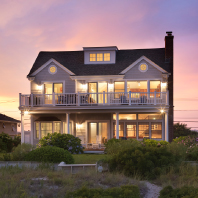In any dense urban area, trash—how much there is, what to do with it, how to reduce it—is a major issue, and the situation in the city of El Cerrito, California, is no different. The problem’s so familiar, in fact, that most of it can be reduced to basic math.
El Cerrito Recycling and Environmental Resource Center
Location: El Cerrito, CA
Started: 2010
Completed:2012
Size: 1.93 acres
Building type: Recycling facility
Rating: LEED Platinum
The solidly middle-class town is located on the west side of San Francisco Bay, sandwiched between Richmond and Berkeley, and it’s home to roughly 23,000 residents. In infrastructural terms, if each person there is generating the EPA estimate of 4.6 pounds of trash per day, that translates to around 39 million pounds of trash per year for the entire populace. Further estimates suggest, though, that with better planning, at least 70 percent of an individual’s daily load could be reused or recycled, which means El Cerrito could potentially bring its total down to 12 million pounds. So, though the city’s annual trash output accounts for only 0.34 percent of the Bay Area’s annual 11.4 billion-pound trash load, the knowledge that it could cut that percentage down to a mere 0.11 percent must be tantalizing indeed.
Helping the city toward this goal is Berkeley-based Noll & Tam Architects, which recently completed an update of the El Cerrito Recycling and Environmental Resource Center in 2012. The center is a testament to the true possibilities of sustainable construction and a useful model for recycling as it should look in the 21st century.
Noll & Tam started its work on the facility’s 1.93-acre site at the end of 2010, but the history of the recycling center dates back to the 1970s, when El Cerrito made what was then a progressive decision to first build it. Chris Noll, a principal at Noll & Tam, recalls using the center himself in its early days. “They set something up that acted as sort of a regional recycling center; people from neighboring cities could bring things there to recycle,” he says. “It has this history of being a destination for people.”

The structure is located on an old quarry site that predates the incorporation of El Cerrito in 1906. The quarry was abandoned as the Bay Area population continued to increase, so later the bowl-shaped cut in the mountain was filled in and claimed by the city for the recycling center. The services and operations of the center grew along with the community, but as the site evolved, it lost its semblance of a sensible plan, with forklifts and dump trucks using the same space as pedestrian vehicles. “The site was showing serious signs of age,” Noll says. “The way it was working technically was potentially dangerous for people and vehicles using it.”
Following an audit and estimation for renovation performed by the city, El Cerrito worked with Swinerton Management & Consulting to draft an RFP for design-build teams who could tackle the project, but a tight budget proved difficult for many bidding firms to work around. “The city only had around $3.5 million for the project budget, which translated to around $2.8 million for construction,” Noll says. “We had to think really creatively for how we could keep all of the goals of the program and still build something that would match it.”
Aside from the essential recycling program, a fundamental element of the recycling center remodel—both for Noll & Tam and for the community of El Cerrito—was the center’s reuse program, which would allow users to bring old furniture, tools, books, toys, and other items to be claimed by others in the community. The idea became a key part of Noll & Tam’s site plan, a circular design that would not only respond to the topography of the rounded quarry site but also create a literal center by putting all of the services along the perimeter of the circle. The plan also cleared up many of the technical issues related to vehicle entry and egress.
“We wanted to separate the frontside and backside operations but do it in an elegant way,” Noll says. “We also wanted the design to be dynamic, both fun and interesting but also tough-as-nails because it needs to last a long time. It’s exposed: there’s forklifts and trucks, big metal bins, and everything sees a lot of use.”

With construction now complete, a semi-circular superstructure, framed with wood and steel and mounted on concrete bases, surrounds the public space, at the center of which is a small, landscaped island. Photovoltaic panels are mounted on the roof of the superstructure, and the power harvested from them covers all the center’s basic electric needs, excluding heavy-machinery process loads. The reuse area at the entrance and the large operations structure on the outside of the circle both use a similar superstructural construction.
Noll & Tam also designed the new 2,200-square-foot administration building, built by ZETA Communities Inc. from two parallel module, prefab structures. It contains an office, restrooms, and a central public lobby with a raised clerestory that connects the two modules and brings daylighting into all interior spaces, negating almost all need for artificial illumination. The modules have sustainable, low-VOC finishes, and because they were prefabricated, project waste was minimal. All of the old buildings at the center were deconstructed and recycled to the maximum extent possible.
The amalgamation of these sustainable strategies helped the recycling center earn LEED Platinum certification in December 2012; it was an important win for both Noll & Tam and the city of El Cerrito. “Technically, this was a very difficult site to solve, and it was a really gratifying challenge to design this center,” Noll says. “We always want to do good things for the world with our work. That’s a key part of our ethical philosophy of our design: let’s do good things that matter to people and improve their lives.”




